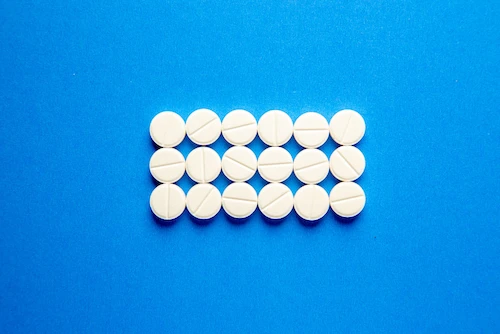Histamine is a compound that is released when the immune system detects a foreign substance, in this case, allergens. Present in all bodily tissues, it plays a key role in allergic reactions and the body's inflammatory responses. In some cases, allergies manifest in the sinuses with symptoms such as a runny nose, red itchy eyes, or a sore throat. And for others, exposure to allergens shows up with symptoms such as hives, rashes, and other skin changes.
What is angioedema?
Angioedema is a reaction caused by the excess release of histamine. The skin reaction is similar to hives, but the swelling occurs under the skin, versus on the skin’s surface. This subcutaneous swelling usually occurs around the eyes and mouth, however, angioedema can also occur on the hands, feet, and larynx of the throat. If hives are present, the condition is called urticaria, and it's usually very itchy and painful. It is possible to have hives with angioedema or angioedema without hives.
Chronic urticaria is a common condition, with 75% of cases having an unknown cause. These cases are therefore called chronic idiopathic urticaria or CIU.
The common causes of angioedema include food allergies, insect bites, environmental exposures such as pollen, certain medications, animal dander, and autoimmune disorders.
The significance of angioedema with hypothyroidism
In the early 1980s, Dr. Arthur Leznoff – the former Division Head of Clinical Immunology and Allergy at St. Michael’s Hospital – demonstrated that there was a link between angioedema and hypothyroidism. Over the years, other studies have been conducted to assess whether angioedema is an independent occurrence or whether it is a symptom of hypothyroidism. A 1989 study showed that a significant percentage of their study group of patients with chronic urticaria or angioedema had evidence of associated thyroid autoimmunity. A 2015 controlled study of 115 patients with angioedema found that 16.5% of those patients had hypothyroidism. In general, the research has established that there is a significantly greater risk of autoimmunity in those with angioedema, and a relationship between angioedema and autoimmune thyroid disorders.
Diagnosing angioedema
So which comes first, the chicken or the egg? (Or in this case, hypothyroidism or angioedema?)
If a patient is showing clinical signs of angioedema or chronic urticaria, experts recommend that they also have thyroid antibody testing done to rule out the presence of thyroid autoimmunity. Given the increased frequency of thyroid autoimmunity in patients with chronic urticaria and/or angioedema, autoimmunity could play a role in the development of either condition.
A unique case of a female patient with chronic angioedema of the tongue showed that there she also had underlying Hashimotos’ disease. Having an awareness that these two conditions can play into one another resulted in an accurate diagnosis of both conditions, and allowed for the correct treatment of the underlying disease.
Treating angioedema
The primary way to treat angioedema is to avoid any substances, including foods, that are known to trigger the angioedema. In addition, doctors frequently recommend taking an over-the-counter antihistamine.
Interestingly, in patients with angioedema who also have underlying hypothyroidism, the administration of thyroid hormone, usually in the form of levothyroxine, has shown promise in the treatment of their angioedema and reduction of their symptoms.
A 2012 study evaluated nearly 750 patients, all with chronic urticaria and autoimmune thyroiditis. The patients were treated with levothyroxine for about 53 days, and clinically normal thyroid levels were restored in all patients. Via a serum skin test, the prevalence and levels of urticaria activity were recorded throughout the length of the study, and a significant reduction in the score was seen in the patients. In this case, 10 patients with stubborn hives were treated with levothyroxine, while 7 of them had elevated anti-thyroid antibodies at baseline. Those 7 patients reported a resolution in their symptoms within 4 weeks of using levothyroxine to address their initial symptoms.
It seems that the therapeutic use of levothyroxine can have a double effect, treating both angioedema or urticaria and hypothyroidism.
A note from Paloma
Accurate and timely diagnosis and treatment of hypothyroidism can be a crucial part of resolving episodes of angioedema, or chronic angioedema. Schedule a visit with a knowledgeable Paloma thyroid doctor to monitor your thyroid levels regularly, oversee and direct your hypothyroidism treatment, and help ensure that you feel your best!
.webp)











